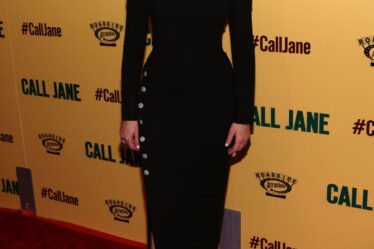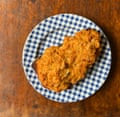
Or cheese on toast elevated from an everyday tea to something far more luxurious. The idea of adding crab to rarebit has been around since at least the 1930s, when it was described as an American creation, but the dish has had a resurgence in recent years as chefs look for new ways with old favourites (see also truffle macaroni cheese and panko-clad fish finger sandwiches). Happily, it’s as easy as you might imagine to recreate at home – “so quick and simple that I often whip it up after work to eat in front of the telly”, as chef Bryn Williams explains – and a gratifying way to make an often pricey seasonal ingredient go a little bit further.
The crab
Rarely is the contrast between white and brown meat so pronounced as in the brown crab, where the sweet, pearlescent flakes are so completely at odds with the richly savoury, brick-coloured paste underneath that they could come from two completely different creatures. Both have their merits – the brown meat (which is generally much cheaper, should you be buying it separately) gives the cheese a run for its money in the flavour stakes, while the white provides that distinctively crab-like mouthfeel. You could use one or the other, as Jane Lovett does in her new book Deliciously Simple (white alone makes for a lighter result), but I think you need both for perfection.
The version from Cornwall’s The Hidden Hut, whose chef Simon Stallard published a book of his recipes a few years ago, spreads the brown meat on the toast like paté and folds the white meat into the topping. Williams, Salcombe’s Crab Shed and food writers Tamasin Day-Lewis and Sue Lawrence all use both in the topping, while chef Galton Blackiston includes just the brown meat, sprinkling the white on top as a garnish at the end. It’s hard to go wrong here; keeping the brown meat separate, as in Stallard’s version, means you get a burst of pure, unadulterated crab with every bite, but the stuff combines so well with the cheese that I’m going to incorporate it into the topping, too, along with most of the white meat for texture. The rest will go on top, so it doesn’t get lost amid more aggressive flavours.
Williams uses a 50:50 ratio of white and brown meat, Stallard four times as much white as brown, and the others (if they specify amounts, that is) somewhere in between. I like mine with a slight bias towards the more delicate white meat, but with enough brown for it to be obvious; you may wish to tweak to suit your own tastes, or what you have available.
The cheese
Fairly simple, because almost everyone uses cheddar (if you want to nod to the Welsh origins of the rarebit, I’d recommend going for a Welsh variety rather than Caerphilly, whose lactic tang is a bit too restrained for this dish), though Day-Lewis and Blackiston both suggest gruyere, whose sweet, nutty flavour, to my mind, pairs beautifully with similar notes in the seafood. Just about any hard cheese will work, though.
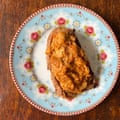
Day-Lewis finishes her “cheesy crabby toasts” with a grating of parmesan, which I’m going to eschew, because I don’t want to smother the white meat. If you’re not a fan of crab and cheese together, but you’ve read this far all the same, you’ll be relieved to know that Williams’ recipe doesn’t feature cheese at all; you can find it in his book Bryn’s Kitchen.
The sauce
The recipes I try are fairly evenly split between those that make a white sauce base for the dish (Stallard, Blackiston and Crab Shed), and those that rely on the crab alone, enriched with egg yolk (Lawrence and Williams) or butter (Day-Lewis in her book All You Can Eat). The first approach produces a more comforting, creamy result, and has the virtue of allowing the cook to add other ingredients to suit their own tastes, replacing some of the usual milk with ale (Blackiston) or cider and double cream (Crab Shed, and particularly good with gruyere). The second yields a punchier, more intense, crustacean flavour that I’m drawn to (after all, if you’re going to pay for a crab, you may as well let it take centre stage). I’ve included an egg yolk as a binder to give the topping a smoother consistency, though if you leave it out, the flavour won’t suffer. (Interestingly, Lovett uses mayonnaise and double cream which also works very well, yielding a slightly milder flavour that’s perfect with white meat alone, but without the extra washing-up a white sauce creates.)
Flavour enhancers
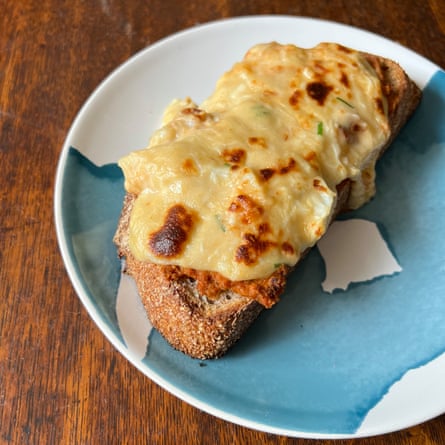
The classic rarebit seasonings of Worcestershire sauce and chilli, whether in the form of Tabasco or a pinch of cayenne pepper, are justly popular here, too, the former combining particularly happily with the sweetness of the crab. Mustard is a common addition, dijon for Lawrence, Lovett and Day-Lewis, English for Stallard and Blackiston, wholegrain for Crab Shed. I’m going to use the sweetly fiery English mustard powder I favour for ordinary cheese on toast, not least because it also helpfully acts as a binding starch. I also love Lovett’s spring onions, which cut through the richness of the crab and cheese to add a note of freshness to proceedings.
You can stop there, or make it even fancier with a slug of booze – Day-Lewis’s “little toasts” are, one suspects, intended to be consumed with drinks such as the dry, nutty sherry they contain, while Lawrence, who credits the recipe in A Taste of Scotland’s Islands to Ron Goudie of Islay, includes local whisky. As she says, “even though there only is a tiny amount of Islay whisky in this dish, the smoky peat flavour sings through the fabulous concoction”, bringing out the crab’s salty-sweet, maritime notes.
Any herbs are, I think, largely there for the dash of colour they contribute, rather than their flavour; given the cheese element here, I’ve gone for Stallard’s chives, but Day-Lewis’s anise-heavy chervil might well work better with crab alone and would be especially nice with Williams’ lemon zest.
The bread

No surprise that, as with the cheese, you should use whatever bread you generally choose for cheese on toast, though, like Stallard, I’d advise something sturdy such as sourdough for reasons of structural integrity. Lawrence’s dense, cakey soda loaf, which toasts brilliantly, is also worthy of consideration, and, though I’m sceptical of Crab Shed’s rye bread, I really enjoy the sour flavour and incredible crispness that the 100% rye sort delivers, which more than stands up to the cheese and crab, rather than being a mere vehicle for the topping. (I suspect a crumpet to be a fine idea, but I can never get past the fact that they’re so good just as they are with vast amounts of butter that anything else feels like gilding the lily.)
Whatever you go for, I would recommend toasting it lightly first, to crisp both sides, before adding the topping (spread it right to the edges to avoid burning the crusts) and grilling until golden and bubbling. Toasting just one side will, obviously, bring a softer, fluffier element to the dish, which you may prefer, but which will be dangerous if you plan to serve this as finger food. No one wants hot crab down their front.
Perfect crab rarebit
Prep 5 min
Cook 10 min
Serves 2
2 tsp English mustard powder
1 tsp Worcestershire sauce
A few shakes of Tabasco, or a pinch of cayenne pepper or paprika
1 egg yolk
50g gruyere, or cheddar, grated
1 spring onion, sliced (optional)
30g brown crab meat
45g white crab meat
Black pepper
2 slices of bread – I favour rye, soda bread or sourdough
A few chives, finely chopped (optional)

Mix the mustard powder, Worcestershire sauce and Tabasco to a paste, then add the egg yolk, cheese, spring onion if using, brown crab meat and 20g of the white meat. Stir and season with black pepper.
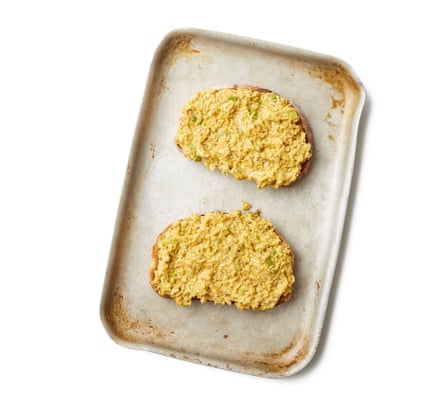
Heat the grill to medium, toast the bread until lightly crisp, then turn over and repeat. Turn up the heat. Divide the topping between the slices of toast, spreading it right to the edges to prevent the crusts burning, then return to the grill for three or four minutes, until golden and bubbling.
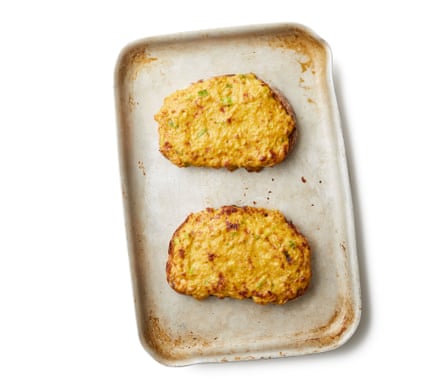
Top with the remaining white crab meat and chopped chives, if using, and serve hot.
-
Crab rarebit – does the idea of seafood and cheese make you throw your hands up in horror, or does it seem a marriage made in heaven? And what else do you like to do with crab while it’s in season? (A large slab of cold, unsalted butter and a stack of soft brown bread are my favourite accompaniments.)
-
The Guardian aims to publish recipes for sustainable fish. For ratings in your region, check: UK; Australia; US.


